Many think Canada as a peaceful nation, but on this date, yet another bloody rebellion was begun.
Following rebellions in Upper and Lower Canada in 1837-38 before Confederation, and then the Red River Rebellion in 1869 immediately following Confederation, the brand new country of Canada faced yet another major crisis just over a decade later, and for many of the same lingering reasons that caused the 1869 rebellion.
On this date in what is now western Canada, rebel leader Louis Riel seized hostages and declared himself leader of the Provisional Government of Saskatchewan.
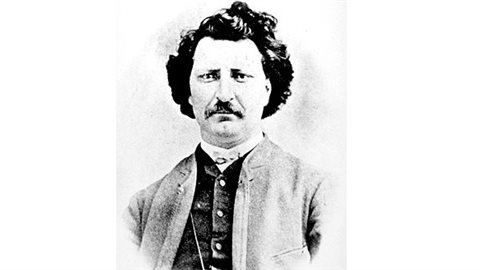
Preface
In the mid 1800’s the area now known as Manitoba had been settled by French and Scottish fur traders who had married aboriginal women. Now identifying themselves as Metis (mixed blood), many spoke French and had set up farms in the seigniorial manner, long narrow strips.. When Rupert’s Land reverted from the Hudson’s Bay Company to Canada, surveyors were sent out to establish future townships in English style square sections. As many Metis had no title to the land, they became anxious and angry.
Riel as spokesman tried to negotiate with the federal government to create Manitoba as a province so it, and the Metis and aboriginal inhabitants, could have some control over its, and their, future. Riel and his supporters had in the meantime prevented the surveyors from working.
The situation escalated when Riel’s self-declared provisional government, seized Fort Garry, arrested several residents who were “pro Canada”, including one Thomas Scott, who was later tried and executed for death threats against Riel. This executioni incited the rest of Canada and the federal government who declared Riel and this action treasonous. A military force was sent to arrest Riel who slipped into the US. At that point any further hint of unrest was quelled, temporarily.
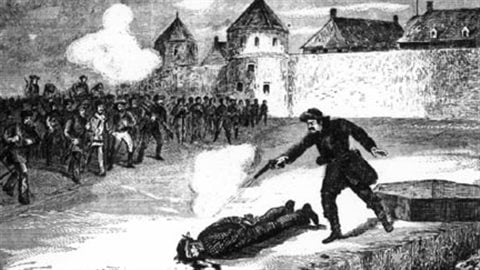
However the federal government did eventually recognize the Red River Colony as the province of Manitoba in 1870 (a mere portion of the present day province) and did incorporate some of Riel’s demands, such as protection of the Catholic religion and separate French schools.\
Riel was exiled from Canada for 5 years, and surprisingly was elected in absentia three times to the federal government as representative of Manitoba
Bloody Rebellion
But the situation in western Canada continued to be unstable. Aboriginal groups had depended on trapping for the Hudson’s Bay Company, and on bison for their survival. But the bison were now fewer and fewer, and the Hudson’s Bay Company needs were dwindling.
Meanwhile what had formerly been Rupert’s Land, was now called the Northwest Territories, comprising most of what is now Manitoba, Saskatchewan Alberta, the Northwest territories, along with northern Ontario and Quebec. Many Metis in the meantime had moved further west
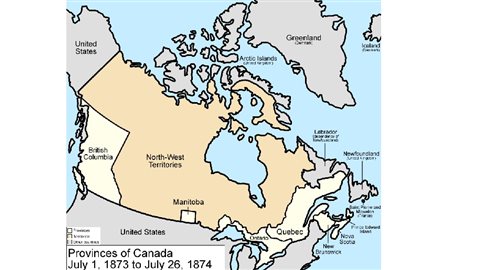
Poor harvests in the previous years had also left hardship among the Metis, and aboriginals who were in particularly desperate straits without buffalo meat to sustain them. The Cree also had been cut off from supplies from the government in an attempt to get them to agree to a treaty and move onto a reserve land.
This was in addition to Metis uncertainty about title to their land, and protection of their rights to such things as language and religion as more English protestant settlers began arriving. This was especially so as surveyors had once again arrived to create the District of Saskatchewan, again in the conflict of square townships vs the longitudinal French system came into conflict and dozens of settlers in one region suddenly discovered that Canada had sold their “land” in the Parish of St Louis to a colonization company.
Riel was urged by supporters to return to Canada in 1885 to lead residents in addressing their concerns to the federal government.
With no sympathy from the federal government Riel and supporters on this date declared a provisional government and seized the church at Batoche. Several days later a group of aboriginals and supporters occupied the community of Duck Lake but were met by a force of Northwest Mounted Police and volunteers, several of whom were killed in a shootout.
The federal government responded to this new uprising by sending troops by the newly created railway from eastern Canada. Meanwhile starving aboriginals looted the town and store at Battleford. Days later another aboriginal group, starving and angry at the continuing lack of aid from the federal government attacked and looted the Frog Lake settlement for food and other supplies. In the ensuing melee several residents were killed.
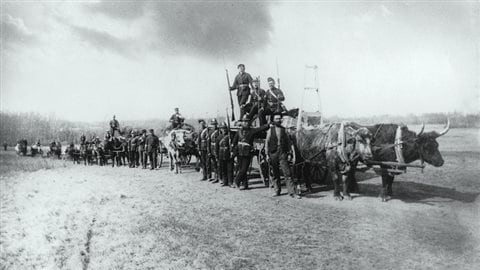
On April 15 Fort Pitt was then attacked and burned, with one police death. On April 24, the Metis defeated a superior military force which had arrived at Fish Creek.
On May 2, aboriginals at Cut Knife, near Battleford then defeated another military force
However the main battle would occur at Batoche on May 9, where after a protracted battle of several days, the Metis force was broken and Riel arrested.
Two more brief skirmishes occurred later with aboriginal groups, but essentially the Northwest Rebellion was over by early summer 1885
As a result the government provided some relief supplies to aboriginal groups but eight aboriginal leaders were hanged, Aboriginal Chiefs Poundmaker and Big Bear were imprisoned
Riel was tried for treason and hanged, in what many consider to this day to be a trumped up trial.
Batoche has since been declared a national historic site. Cutknife is now the site of The Poundmaker Historical Centre and Big Bear monument cairn erected by the Historic Sites and Monuments Board of Canada.
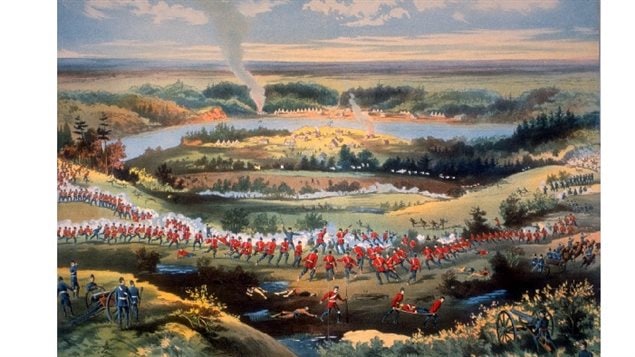






For reasons beyond our control, and for an undetermined period of time, our comment section is now closed. However, our social networks remain open to your contributions.